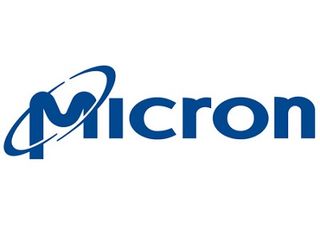Micron Wants NVDIMM "Hybrid Memory" to Become Reality
Micron has been working on NVDIMMs, a 'hybrid' storage solution, aiming to bridge the gap between DRAM and SSDs. The idea is that all the data in the DRAM would get written to NAND memory upon losing power.

The biggest problem with our current standard of RAM, the Dual-Inline Memory Module (DIMM) is that all data stored is instantly lost when the module loses power. Whilst we've learned how to deal with this limitation through Hibernation and Sleep modes, neither are ideal as the former involves a slow process of writing the contents of the DIMMs to a Hard Drive or SSD and the latter leaves RAM running which consumes power. This situation is the primary reason why most laptops will drain a fully charged battery in just a few days of being in sleep mode and has the potential to cause significant problems for desktops in the event of a power cut. For home users this may be a small annoyance, but in an enterprise environment this is clearly impermissible.
It appears that Micron's new technology of Non-Volatile Dual-Inline Memory Modules or NVDIMNs may provide a lasting solution to this problem. A NVDIMM is surprisingly simple: Onboard an NVDIMM is DRAM, this is used like the computer memory we are used to now, in fact, it is the same. On top of this, there is an amount of NAND memory and a system of capacitors onboard. Today's capacitors are constructed well enough and powerful enough to give the module enough time, after the power is cut, to write all the contents of the DRAM to the NAND memory. Upon restoring power, all the information should be written back from the NAND memory to the DRAM, and normal operations continue.

Though this only partially solves the slow recovery time from Hibernation, it is still significantly quicker to load the contents of DRAM from NAND memory than from a HDD and more importantly will provide full data recovery in the event of a power cut since the onboard capacitors would always be charged and thus the contents can be quickly saved to the onboard NAND memory in case of power loss.
Micron's first demonstration of this technology, its first NVDIMM, had 4 GB of DRAM onboard and 8 GB of NAND memory. No reason has been given for the double NAND over DRAM, but we can assume it has to do with the limited lifetime of flash memory, which decays over writes.
Though it is still unknown when this technology will come to the market, Micron is confident that NVDIMMs will bridge the gap between DRAM and SSDs and will be attractive for both enterprise and consumer environments.
Contact Us for News Tips, Corrections and Feedback
Stay On the Cutting Edge: Get the Tom's Hardware Newsletter
Get Tom's Hardware's best news and in-depth reviews, straight to your inbox.
Niels Broekhuijsen is a Contributing Writer for Tom's Hardware US. He reviews cases, water cooling and pc builds.
-
mayankleoboy1 ReplyThe biggest problem with our current standard of RAM, the Dual-Inline Memory Module (DIMM) is that all data stored is instantly lost when the module loses power.
You dont say
http://i2.kym-cdn.com/entries/icons/original/000/007/666/_57c8a1a431a592af806925e57258202f.png -
MauveCloud A good enterprise server would already have a UPS set up, with signalling to hibernate to an ssd if the power cut lasted long enough to risk the backup battery running out, wouldn't it? Would these NVDIMMs really offer any advantage over that? I doubt I'd bother with it for my home computer.Reply -
freggo Could we not keep some of the windows boot files in the NAND memory as well?Reply
Should make the system start up much quicker.
-
freggo MauveCloudA good enterprise server would already have a UPS set up, with signalling to hibernate to an ssd if the power cut lasted long enough to risk the backup battery running out, wouldn't it? Would these NVDIMMs really offer any advantage over that? I doubt I'd bother with it for my home computer.Reply
Cheaper than a UPS and most home users do not have a UPS; most don't even know or care that these exists (at least among my none geek friends) !
-
house70 I am not sure how much power DRAM draws, but this could be addressed by giving a battery power source to the module. A lithium battery can last 10 years, could be replaceable and this would avoid the NAND degradation issues. Even better, it could be a rechargeable one, charging while the PC is on AC power.Reply
Just my 2 cents. -
duxducis this would have to be able to wipe itself beyond any file recovery or it be bad for those who use encryption and need hi security.Reply -
spazoid Unless your power delivery is VERY unreliable, I doubt you'd require a 100% overprovisioning to avoid running out of usable cells. Remember, it only writes the DRAM contents whenever power is lost.Reply -
Estix house70I am not sure how much power DRAM draws, but this could be addressed by giving a battery power source to the module. A lithium battery can last 10 years, could be replaceable and this would avoid the NAND degradation issues. Even better, it could be a rechargeable one, charging while the PC is on AC power.Just my 2 cents.Reply
Some sort of computer with a built-in battery?
Next you'll suggest they add in the keyboard and screen to the same chassis... -
house70 EstixSome sort of computer with a built-in battery?Next you'll suggest they add in the keyboard and screen to the same chassis...Some sort of RAM module with a built-in battery.Reply
Your sarcasm is totally misplaced, you did not even understand my point. Reading comprehension fail.
Most Popular






